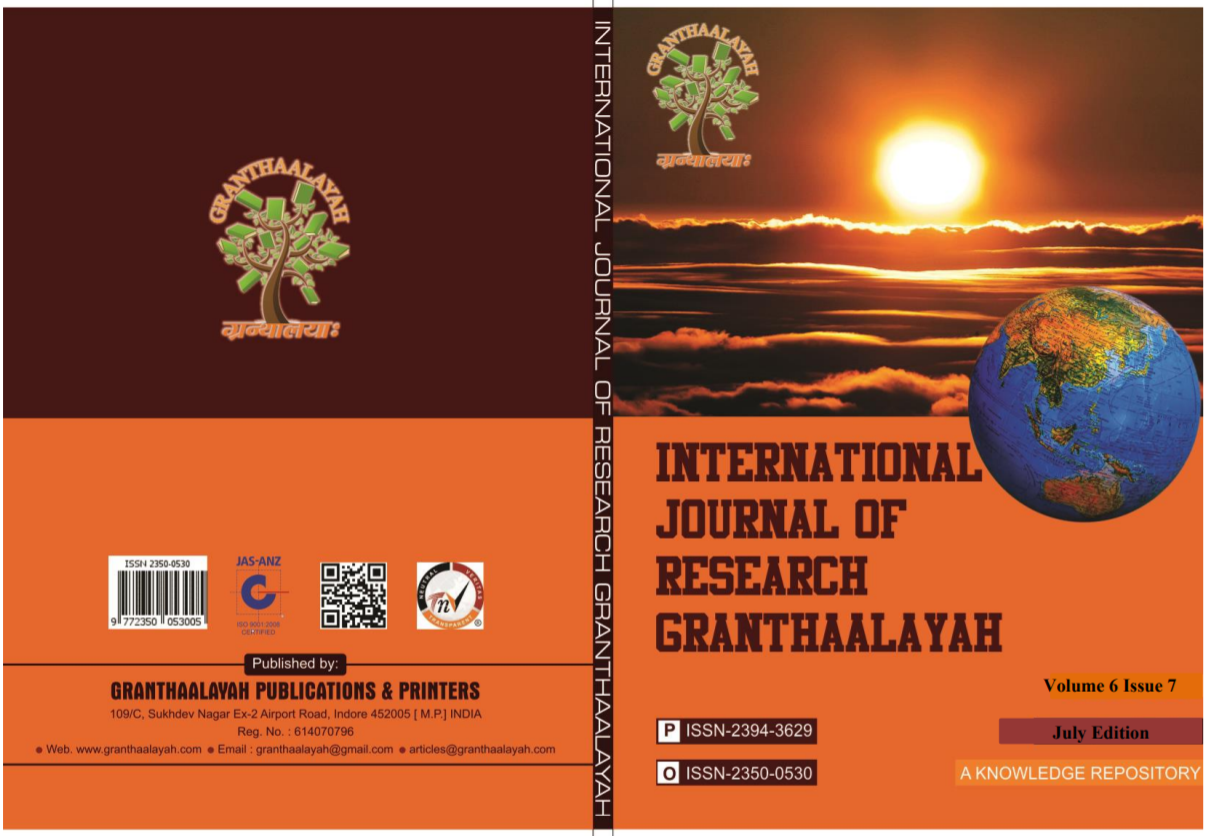REDUCTION OF ACTIVE POWER LOSS BY IMPROVED TABU SEARCH ALGORITHM
DOI:
https://doi.org/10.29121/granthaalayah.v6.i7.2018.1277Keywords:
Tabu Search, Simulated Annealing, Reactive Power Problem, Transmission LossAbstract [English]
In this paper, an Improved Tabu Search (ITS) algorithm has been proposed to solve the optimal reactive power problem. In this work Tabu Search- has been hybridized with Simulated Annealing algorithm to solve the optimal reactive power problem. Hybridization of these two algorithms improves the exploration & exploitation capabilities during the search. Proposed Improved Tabu Search (ITS) algorithm has been tested in Standard IEEE 57,118 bus systems & real power loss has been comparatively reduced with voltage profiles are within the limits.
Downloads
References
O.Alsac,and B. Scott, “Optimal load flow with steady state security”,IEEE Transaction. PAS -1973, pp. 745-751. DOI: https://doi.org/10.1109/TPAS.1974.293972
Lee K Y, Paru Y M, Oritz J L –A united approach to optimal real and reactive power dispatch, IEEE Transactions on power Apparatus and systems 1985: PAS-104: 1147-1153 DOI: https://doi.org/10.1109/TPAS.1985.323466
A. Monticelli, M. V.F Pereira, and S. Granville, “Security constrained optimal power flow with post contingency corrective rescheduling”, IEEE Transactions on Power Systems: PWRS-2, No. 1, pp.175-182.,1987. DOI: https://doi.org/10.1109/TPWRS.1987.4335095
Deeb N, Shahidehpur S.M, Linear reactive power optimization in a large power network using the decomposition approach. IEEE Transactions on power system 1990: 5(2): 428-435 DOI: https://doi.org/10.1109/59.54549
E. Hobson,’Network consrained reactive power control using linear programming, ‘IEEE Transactions on power systems PAS -99 (4), pp 868=877, 1980 DOI: https://doi.org/10.1109/TPAS.1980.319715
K.Y Lee, Y.M Park, and J.L Oritz, “Fuel –cost optimization for both real and reactive power dispatches”, IEE Proc; 131C, (3), pp.85-93. DOI: https://doi.org/10.1049/ip-c.1984.0012
M.K. Mangoli, and K.Y. Lee, “Optimal real and reactive power control using linear programming”, Electr.Power Syst.Res, Vol.26, pp.1-10,1993. DOI: https://doi.org/10.1016/0378-7796(93)90063-K
K. Anburaja, “Optimal power flow using refined genetic algorithm”, Electr.Power Compon.Syst, Vol. 30, 1055-1063,2002. DOI: https://doi.org/10.1080/15325000290085343
D. Devaraj, and B. Yeganarayana, “Genetic algorithm based optimal power flow for security enhancement”, IEE proc-Generation.Transmission and. Distribution; 152, 6 November 2005. DOI: https://doi.org/10.1049/ip-gtd:20045234
Glover, F. (1986). Future paths for integer programming and links to artificial intelligence. Computers & Operations Research, 13(5), 533-549. DOI: https://doi.org/10.1016/0305-0548(86)90048-1
Glover, F. (1989). Tabu Search - Part 1. ORSA Journal on Computing, 1(2), 190–206. DOI: https://doi.org/10.1287/ijoc.1.3.190
Glover, F. (1990). Tabu Search - Part 2. ORSA Journal on Computing, 2(1), 4–32. DOI: https://doi.org/10.1287/ijoc.2.1.4
Paul, G. (2010). Comparative performance of tabu search and simulated annealing heuristics for the quadratic assignment problem. Operations Research Letters, 38(6), 577-581. DOI: https://doi.org/10.1016/j.orl.2010.09.009
Chaohua Dai, Weirong Chen, Yunfang Zhu, and Xuexia Zhang, “Seeker optimization algorithm for optimal reactive power dispatch,” IEEE Trans. Power Systems, Vol. 24, No. 3, August 2009, pp. 1218-1231. DOI: https://doi.org/10.1109/TPWRS.2009.2021226
J. R. Gomes and 0. R. Saavedra, “Optimal reactive power dispatch using evolutionary computation: Extended algorithms,” IEE Proc.-Gener. Transm. Distrib. Vol. 146, No. 6. Nov. 1999. DOI: https://doi.org/10.1049/ip-gtd:19990683
IEEE, “The IEEE 30-bus test system and the IEEE 118-test system”, (1993), http://www.ee.washington.edu/trsearch/pstca/.
Jiangtao Cao, Fuli Wang and Ping Li, “An Improved Biogeography-based Optimization Algorithm for Optimal Reactive Power Flow” International Journal of Control and Automation Vol.7, No.3 (2014), pp.161-176
Downloads
Published
How to Cite
Issue
Section
License
With the licence CC-BY, authors retain the copyright, allowing anyone to download, reuse, re-print, modify, distribute, and/or copy their contribution. The work must be properly attributed to its author.
It is not necessary to ask for further permission from the author or journal board.
This journal provides immediate open access to its content on the principle that making research freely available to the public supports a greater global exchange of knowledge.






























